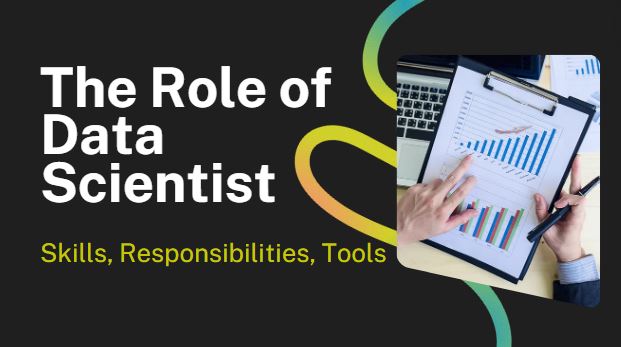
Data science has rapidly emerged as one of the most sought-after fields in today’s data-driven world. Businesses across industries are leveraging data to make informed decisions, drive innovation, and gain a competitive edge. At the heart of this revolution is the data scientist—a role that blends technical expertise with business acumen to extract valuable insights from vast amounts of data.
Key Skills Required for a Data Scientist
Proficiency in Programming Languages:
A data scientist must be skilled in programming languages like Python, R, and SQL. These languages are essential for data manipulation, statistical analysis, and the implementation of machine learning algorithms.
Statistical Analysis and Mathematical Expertise:
Strong foundations in statistics and mathematics are crucial for a data scientist. Understanding statistical tests, distributions, and estimators helps in deriving meaningful conclusions from data.
Data Wrangling and Preprocessing:
Data scientists often deal with unstructured and messy data. The ability to clean, transform, and prepare data for analysis is a vital skill that ensures the accuracy and reliability of the results.
Machine Learning and AI:
With the rise of big data, machine learning has become an integral part of data science. Data scientists must be proficient in various machine learning algorithms and techniques to build predictive models.
Data Visualization:
Communicating insights effectively is as important as deriving them. Data visualization tools like Tableau, Power BI, and Matplotlib enable data scientists to present complex data in an understandable and visually appealing way.
Business Acumen:
Understanding the business context is key to identifying the right problems to solve with data. A data scientist must be able to align data-driven insights with business goals and strategies.
Core Responsibilities of a Data Scientist
Data Collection and Exploration:
Data scientists are responsible for gathering data from various sources, including databases, APIs, and web scraping. They then explore the data to identify patterns, trends, and anomalies that can inform further analysis.
Model Building and Evaluation:
Once the data is prepared, data scientists build predictive models using machine learning techniques. These models are then evaluated for accuracy, precision, and other relevant metrics to ensure their effectiveness.
Data-driven Decision Making:
Data scientists play a crucial role in helping businesses make data-driven decisions. They translate data insights into actionable recommendations that can drive business growth and efficiency.
Collaboration with Cross-functional Teams:
Data scientists often work closely with other departments, such as marketing, finance, and product development, to ensure that data insights are integrated into business strategies.
Continuous Learning and Adaptation:
The field of data science is constantly evolving, with new tools and techniques emerging regularly. Data scientists must stay updated with the latest developments and continuously refine their skills.
Essential Tools for a Data Scientist
Programming Languages:
Python: A versatile language widely used for data analysis, machine learning, and automation.
R: Popular for statistical analysis and data visualization.
SQL: Essential for querying and managing databases.
Data Visualization Tools:
Tableau: A powerful tool for creating interactive and shareable dashboards.
Power BI: Microsoft’s tool for creating business intelligence reports and visualizations.
Matplotlib: A Python library for creating static, animated, and interactive visualizations.
Big Data Tools:
Apache Hadoop: A framework that allows for the distributed processing of large data sets.
Spark: A fast and general-purpose cluster-computing system for big data.
Machine Learning Libraries:
Scikit-learn: A Python library that provides simple and efficient tools for data mining and data analysis.
TensorFlow: An open-source library for machine learning and AI developed by Google.
Data Management Tools:
Hadoop: Used for storing and processing large data sets in a distributed computing environment.
NoSQL Databases: Such as MongoDB, which is used for handling unstructured data.
Conclusion
The role of a data scientist is both challenging and rewarding, requiring a blend of technical skills, analytical thinking, and business acumen. With the right tools and a continuous learning mindset, data scientists can unlock the potential of data to drive innovation and success in any organization. Whether you’re just starting out or looking to advance in this field, focusing on these key areas will set you on the path to becoming a successful data scientist.


